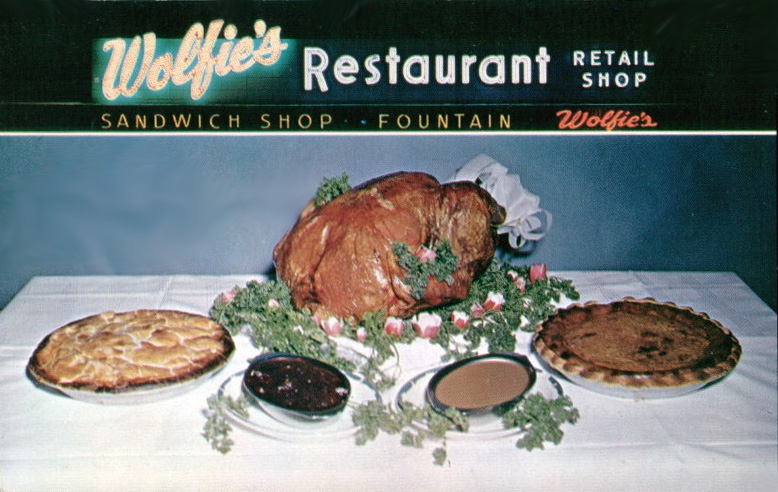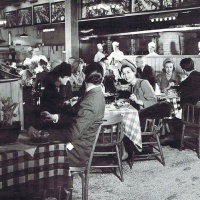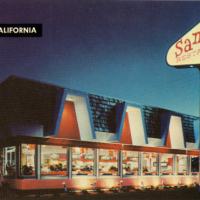These are older posts, but still as good as ever! I mean, how much can you write about Thanksgiving and restaurants – or about turkey? Well I managed to turn out seven that are decent enough for a rerun. Here they are, in chronological order. [Victorian trade card, 1878]
Restaurant-ing on Thanksgiving
Is eating Thanksgiving dinner in a restaurant a “rather melancholic thing”? Does the menu tend toward “baby food”?
A Thanksgiving Toast
Why we should toast workers in Chinese restaurants on Thanksgiving day.
Thanksgiving quiz
I present you with four dummied up, but real, menus listing complete dinners that were presented at a Kalamazoo café in 1921 and you figure out which was the most expensive. The answer is given in the comments.
Cooking up Thanksgiving
Beginning as a Yankee holiday and retaining that association for decades, the holiday spread slowly. The story on restaurants is simply that it wasn’t at all common for restaurants to recognize the holiday in the 19th century and well into the 20th. It also took a while before all Americans, particularly immigrants, decided the day was meaningful for them.
Turkey on the menu
This one is focused less on the holiday and more on the leading dish. How has turkey fared in restaurants generally? Did luxury restaurants include it on their menus?
Turkey burgers
Another one focused on the bird and the restaurant industry’s attempts to get customers to accept it. Lo, the turkey burger!
Thanksgiving dinner at a hotel
Wealthy members of the Sons of New England showed a preference for goose and plenty of alcoholic beverages at a hotel dinner on Thanksgiving in 1817. Another group of men from Massachusetts, celebrating in 1843, enjoyed a side of baked beans, finishing with a bowl of molasses that made the rounds so they could all get a lick.
Wishing you all a happy holiday!























 It's great to hear from readers and I take time to answer queries. I can't always find what you are looking for, but I do appreciate getting thank yous no matter what the outcome.
It's great to hear from readers and I take time to answer queries. I can't always find what you are looking for, but I do appreciate getting thank yous no matter what the outcome.


